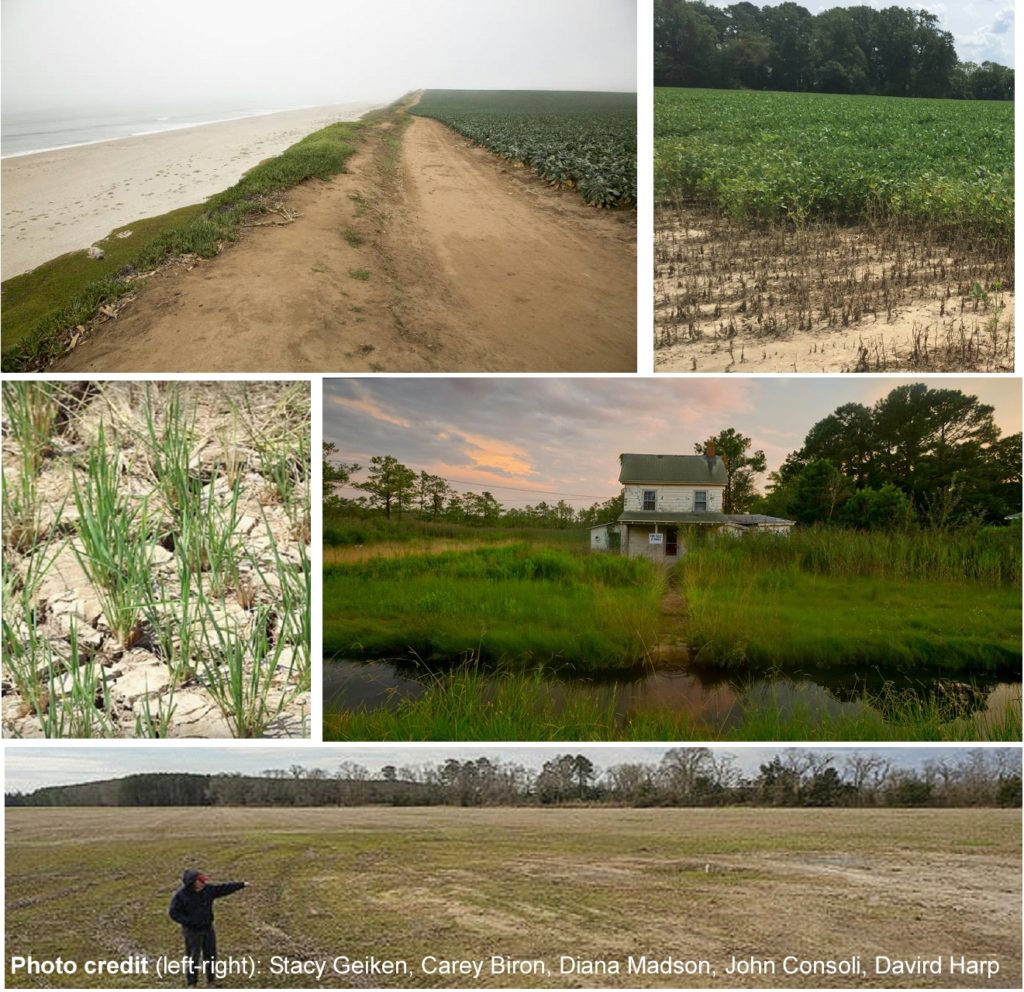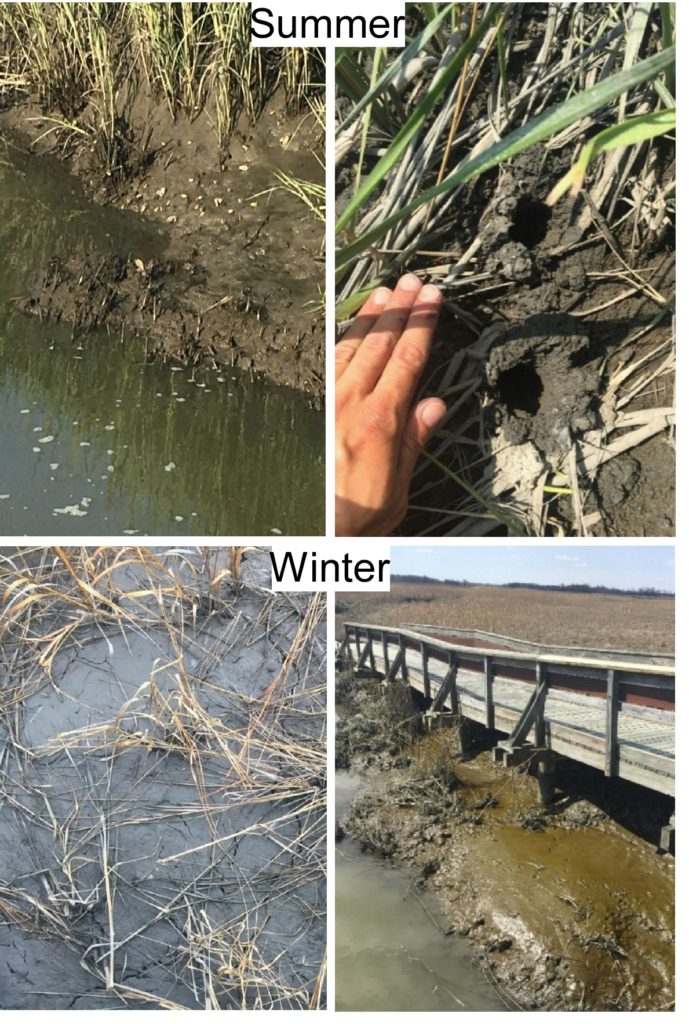Previous Projects

Impacts of marsh migration on saltwater intrusion into coastal agricultural fields
Coastal agricultural fields are vulnerable to storm surge inundation and salinization. Most crops are intolerant of salinity and thus minimization of saltwater intrusion due to storms and high tide events is critical to crop preservation and economic stability. The objective of this study is to explore how marsh migration impacts the extent of surface and subsurface salinization due to storm surges. We also examine the short- and long-term environmental and financial benefits of marsh migration into coastal agricultural land subject to storm surge inundation.
Software: HydroGeoSphere
Citation: Guimond, J. A., & Michael, H. A. (2021). Effects of marsh migration on flooding, saltwater intrusion, and crop yield in coastal agricultural land subject to storm surge inundation. Water Resources Research, 57, e2020WR028326. https://doi.org/10.1029/2020WR028326
Impacts of sea-level rise on coastal wetland hydrology and carbon dynamics
As sea-level rise threatens to drown coastal wetlands, the longevity of coastal wetland ecosystem services is unknown, particularly coastal wetland carbon sequestration. The objective of this study is to explore how sea-level rise impacts carbon dynamics using links between coastal wetland hydrology and carbon accumulation in conjunction with hydrological models.
Software: HydroGeoSphere
Citation: Guimond, J. A., Yu, X., Seyfferth, A. L., and Michael, H. A. (2020). Using hydrological‐biogeochemical linkages to elucidate carbon dynamics in coastal marshes subject to relative sea‐level rise. Water Resources Research, 56, e2019WR026302. https://doi.org/10.1029/2019WR026302

Connecting hydrology, biology, and geochemistry in a coastal wetland
Tidal marshes are valuable global carbon sinks, yet large uncertainties in salt marsh carbon budgets and mechanisms mediating the magnitude and direction of carbon fluxes exist. Specifically, the mechanisms, magnitudes, and timing by which crab burrows influence wetland carbon fluxes are still to be determined. The objectives of this project were to 1) quantify the effects of crab burrows on salt marsh hydrology and geochemistry via changes in sediment permeability and redox potential and 2) identify how and how much crab activity causes carbon loss, or reduced carbon sequestration, in salt marshes.
Project location: St. Jones National Estuarine Research Reserve, Dover, Delaware
Citation: Guimond, J. A., Seyfferth, A. L., Moffett, K. B., and Michael, H. A. (2020). A physical-biogeochemical mechanism for positive feedback between marsh crabs and carbon efflux. Environmental Research Letters, 15(3), 34024. https://doi.org/10.1088/1748-9326/ab60e2